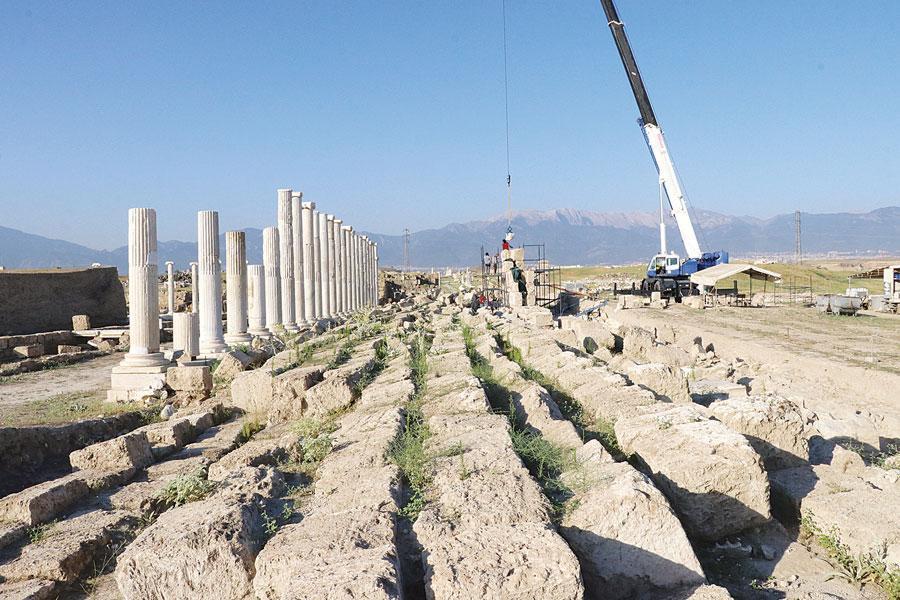
Excavations in the ancient city of Laodicea in the western province of Denizli have found the historic settlement was established by Anatolian people, not Roman or Greeks as previously believed, Celal Şimşek, the head of the archaeology department at Pamukkale University (PAU) who leads the excavations, has said.
Şimşek, who has been leading the 12-month excavations in the ancient city, said they have uncovered important historic structures in the ancient city for the past 15 years, obtaining a lot of information about the history of the ancient city.
Earlier reports suggested that Laodicea was established in mid-3rd century B.C. for Laodice, the wife of the king of Seleucus, Antiochus II, Şimşek said.
“But we saw during the excavations that the history of Laodicea dated back to 5,500 B.C. and was not established by the Romans or Greeks, but the Anatolians. Archaeological works reveal the connections between the past and present. Our works have confirmed that Denizli had been a city of trade and industry even thousands of years ago. Textile was exported to the whole world from there; marble trade reached the sea through the Greater Menderes and the productions of cereals and animals were very rich in this region. The Denizli Lowland, which we call the Lykos Lowland, is a junction point that connects south, west and central Anatolia. The climate is suitable, the land is fertile, and water resources are abundant there. Life has been continuing nonstop in this region for one million years.”
Frescoes are only example
Şimşek said they carried out this year’s excavations in a peristyle house and the northern agora in the ancient city.
“We uncovered the colossal columns seven meters underground in the agora, and as a result, the magnificent frescoed back wall architecture of the ancient period. The inner part of the 11-meter-high and 265-meter-long travertine blocks, which collapsed eastward during an earthquake in 494 A.D., were decorated completely with frescoes,” he said.
“We found nine rows of walls that collapsed during the earthquake as intact due to the rubble piled on them. We consider this wall as a rare example in the world in terms of painting on such a large area. We lift each block up gradually and systematically, after documenting where it fell, and we replace the frescoes after taking the necessary reinforcement measures. Very slow and meticulous work is being carried out in the excavation area. At the moment, there is no area with such well-protected great original wall paintings. Laodicea is very important for both Anatolian archeology and world archeology. These frescoes are one of the most important and only examples of such a large area that spanned today,” the professor added.
Stating that three years ago they unearthed an inscription, which has the world’s longest and most detailed known “water law,” Şimşek said, “This inscription, dedicated to Emperor Trajan, consists of 30 lines and is good enough to be presented to the World Water Forum. It is very important that its content is about the preservation and systematic distribution of water resources as well as the honesty of people who will distribute water.”
He said the ancient city, which was included in the UNESCO World Heritage Tentative List in 2013, was chosen the best destination to host tourists in 2015 on TripAdvisor and won the Europe Nostra Special Jury Prize for the restoration and conservation of the Laodicea Church in 2016.